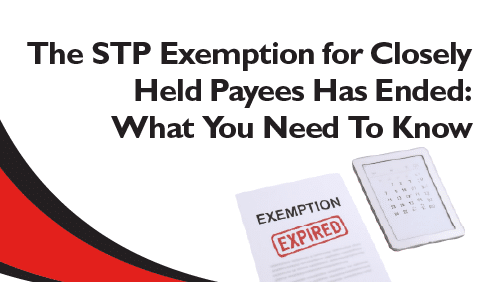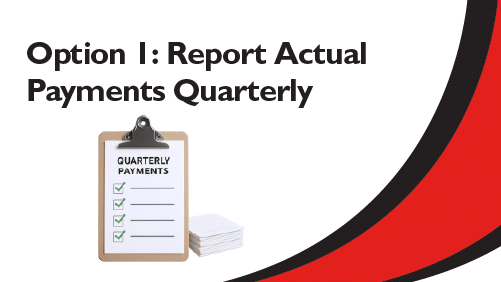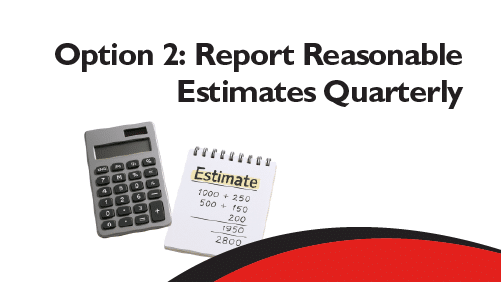If you run a family business, trust, or small company where wages often stay within the inner circle, you’re likely familiar with the phrase “STP exemption for closely held payees”.
The ATO used to offer a full Single Touch Payroll exemption for these payees, but now you’re required to report their wages and payments through STP.
You can choose from a few flexible reporting options.
This is often where the confusion starts, so we’ve created this guide.
We’ll define a closely held payee, what the ATO expects from you, and the different concessional STP reporting options.
Whether you’re a director drawing a salary from your own company or managing payroll for a family-run trust, you’ll get the clarity you need.

Who Qualifies as a Closely Held Payee?
A closely held payee is not hired through a standard recruitment process but has a personal or financial connection to the entity paying them.
For example
- A family member (spouse, child, sibling, or parent) of a director or shareholder who receives wages or distributions from the business. They’re involved in the business because of their relationship, not because they applied for a job.
- A company director or shareholder who draws a salary, even if irregularly or at year-end.
- A trust beneficiary who receives wages or distributions from the trust. Their involvement is tied to their entitlement, not an employment contract.
These individuals differ from an arm’s length employee, who is employed under regular terms and conditions with no close personal or financial ties to the business owners.

The STP Exemption for Closely Held Payees Has Ended: What You Need To Know
Before July 1, 2021, you could skip Single Touch Payroll (STP) reporting altogether if you paid wages to closely held payees.
There is now no STP exemption for closely held payees.
Instead, the ATO offers STP reporting concessions.
The concessions recognise that closely held payees often aren’t paid on a regular weekly or fortnightly cycle.
Some may only receive payments once a quarter or even as a year-end adjustment.
STP reporting is still mandatory.
The concessions just give you breathing room to match your reporting to how and when those closely held payee payments actually occur.
What are the concessional reporting options?

Option 1: Report Actual Payments Quarterly
This reporting method lets you report the payments made to closely held payees during each financial quarter rather than reporting every time you pay them.
This option works well if you track payments closely and prefer reporting based on real figures, not projections.
At the end of the quarter, you lodge an STP report through your STP-enabled software, including the total amounts paid during that period.
You must lodge the STP report by the same date as your quarterly Business Activity Statement (BAS).
- Quarter 1 (July–September): Due October 28
- Quarter 2 (October–December): Due February 28
- Quarter 3 (January–March): Due April 28
- Quarter 4 (April–June): Due July 28
You’ll need to keep accurate records throughout the quarter to avoid missing any payments, which may require more effort if payments are unpredictable or infrequent.

Option 2: Report Reasonable Estimates Quarterly
With this alternative concessional method, you report a reasonable estimate of year-to-date payments made to closely held payees rather than tracking and reporting actual payments each quarter.
It’s best for situations where payments are irregular, unplanned, or made in lump sums, making real-time tracking difficult.
You lodge a quarterly STP report showing the cumulative estimate of payments made up to that point in the financial year.
These reports must be submitted by the due date of your BAS.
To be considered “reasonable”, you must base your estimate on credible information:
- Payment figures from the previous financial year
- Expected drawings based on projected business activity
- The director’s or owner’s planned income for the year
The key requirement with this method is reconciliation.
At the end of the financial year, you must review and adjust your final STP report to reflect the actual amounts paid.
If your estimates were too low or too high, you must correct those discrepancies.
This method can reduce the administrative burden of tracking irregular payments during the year but requires careful planning and accurate year-end adjustments.

Option 3: Report Each Pay Event (Real-Time Reporting)
This is the standard STP reporting method used for most employees, including closely held payees, if you choose not to use one of the concessional options.
Every time you pay a wage, director fee, or distribution classified as salary or wages to a closely held payee, you submit an STP report reflecting the exact amount and payment date.
This method gives the most accurate and up-to-date picture of pay events throughout the year, and there’s no need to estimate or reconcile figures at year-end, as everything is reported as it happens.
It also aligns with how you report wages for regular employees, making things simpler and more consistent.
However, if your payments to closely held payees are irregular or don’t follow a set schedule, this method can be harder to manage and more time-consuming since you’ll need to report every payment as soon as it’s made.

Expert Help With STP for Small Businesses | Pherrus
Gone are the days of the STP exemption for closely held payees.
Now, it’s all about choosing the right reporting method for your business.
As expert accountants and bookkeepers specialising in Australian small business tax and payroll compliance, we can advise you on the most suitable reporting option, ensure accurate reporting, and manage year-end reconciliation and finalisation.
Free up your time and sleep better at night, knowing your STP reporting is taken care of!
Fill out our online form or call (02) 9099 9109 to book your free consultation today.





